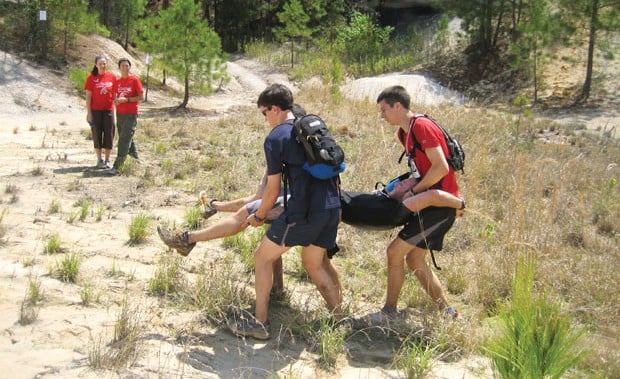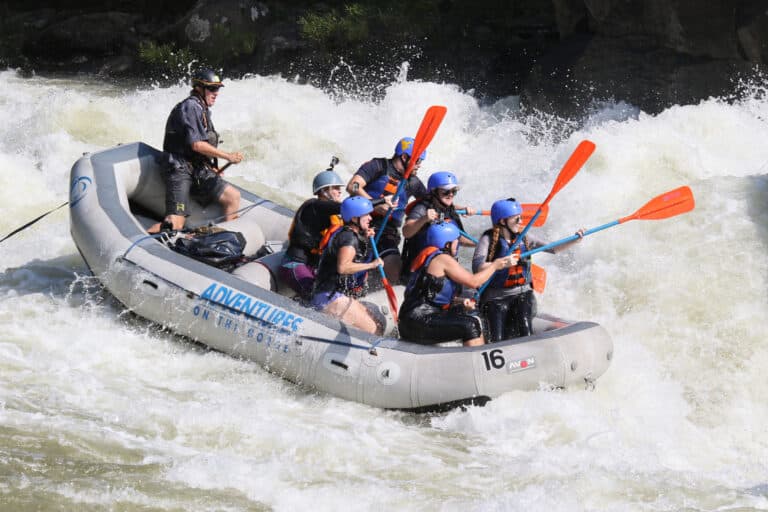Most racers carry a copy of a wilderness medicine handbook, which may help them with some of the questions, but the book typically becomes useless during the medical scenarios. When you have to figure out how to treat a collapsed lung on the edge of a cliff, there’s no time to check the manual.
“You come up on a guy lying in a field with blood all over and you’ve got to figure out how to treat him? Man, I don’t know what to do in that situation,” Luke Smith says. “Most of the time, with our team, the victim ends up dying.”
If you fail to treat a victim properly, there’s a punishment involved, ranging from a round of pushups to a surprisingly difficult victim evacuation simulation, where you have to carry the guy you killed out of the woods.
Hillary Irons is a former MedWAR racer who’s become the mastermind behind the race’s national expansion, coordinating with individual race directors all over the country. She says it’s not uncommon for race teams to kill their victims through poor decision making. Even teams of doctors become flustered when presented with a dramatic scenario in the middle of a forest.
“The principles of emergency room medicine and wilderness medicine are the same, but it’s a completely different ball game in the field,” she says. “You have limited resources and you’re in an unusual environment, so you need creative answers to the problem at hand. Doctors have been trained for so long to treat a situation with ‘XYZ,’ and now they’re in a situation where they don’t have any of those tools at hand. They can have a hard time adjusting.”
The scenarios that racers are presented with range from the mundane (snake bite or diabetic coma) to the surreal (a logger who’s severed his leg with a chainsaw, or a girl lying paralyzed on the side of a trail).
“One year, I was eviscerated on a mountain bike, my guts hanging out of my stomach. My team handled it well,” says Dr. Terry Hashey, a family practice physician and Army in-flight surgeon. “The most important thing you can do in that situation is get the victim out of the trail so he doesn’t get hit by more bikers. Then you begin to address the immediate life threatening issues by securing the victim’s neck and checking his airway. Then rinse the wound, cover it, and call for help.”








